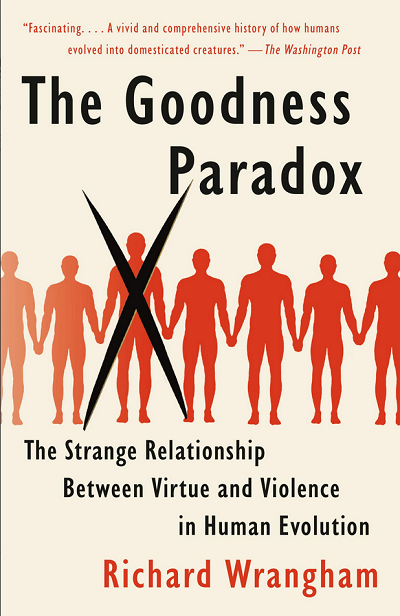A review of The Goodness Paradox: The Strange Relationship Between Virtue and Violence in Human Evolution by Richard Wrangham in the latest edition of Rob Henderson’s Newsletter:
The “self-domestication hypothesis” is the idea that in the ancestral environment, early human communities collectively killed individuals prone to certain forms of aggression: arrogance, bullying, random violence, and monopolizing food and sexual partners.
Over time, our ancestors eliminated humans — typically males — who were exceedingly aggressive toward members of their own group.
If there was a troublemaker, then other less domineering males conspired to organize and commit collective murder against them.
Women too were involved in such decisions involving capital punishment, but men typically carried out the killing.
Humans tamed one another by taking out particularly aggressive individuals. This led us to become relatively peaceful apes.
But if humans are “self-domesticated”, then why are there so many violent people among us today?
The fact is, humans are not nearly as violent as our nearest evolutionary relatives.
Comparing the level of within-group physical aggression among chimpanzees with human hunter-gatherer communities, chimps are 150 to 550 times more likely than humans to inflict violence against their peers.
We humans are far nicer to members of our own group than chimps are. Thanks to our ancestors and their ability to plan organized murder. And tear overly dominant males to shreds.
Many people are familiar with the findings that bonobos are more peaceful than chimpanzees.
This is true.
Male bonobos are about half as aggressive as male chimpanzees, while female bonobos are more aggressive than female chimpanzees.
Bonobos are “peaceful”, relative to chimps. But bonobos are extremely aggressive compared to humans.
The eminent Harvard biological anthropologist Richard Wrangham explores these findings at length in his fascinating 2019 book The Goodness Paradox: The Strange Relationship Between Virtue and Violence in Human Evolution.
This is a review and discussion of Wrangham’s book.




